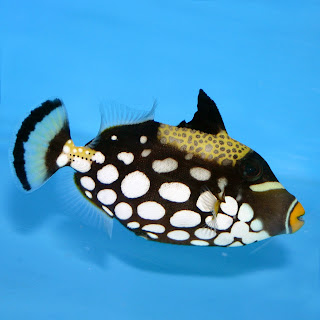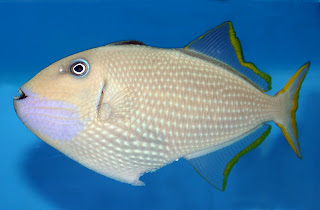Just wanted to let everyone know, That Fish Place is slipping in a Free Shipping for Orders Over $100 promotion just for this weekend; offer ends on March 17th, 2008. Don’t miss this chance to stock up or start a new tank.
Until Next Time,
Dave
Just wanted to let everyone know, That Fish Place is slipping in a Free Shipping for Orders Over $100 promotion just for this weekend; offer ends on March 17th, 2008. Don’t miss this chance to stock up or start a new tank.
Until Next Time,
Dave
As spring appoaches here in the Northeast, many aquarists turn their focus to outdoor ponds and water gardens. Please welcome Patty Little, our resident pond plant pro, to ThatFishBlog and read on as she gives you a few pointers on how to ready your pond plants for the coming warmer months.
Spring. The very thought of it sweeps away the winter doldrums and evokes a plethora of new ideas for outside projects and activites. For many of us, one of the biggest projects is our backyard fish pond or water feature. Whether your pond is already established, or is in the planning stages, now is the ideal time to start thinking about how you want to plant your pond and how to maintain pond plants you may already have.
As with terrestrial gardens, as soon as the threat of frost is passed, new marginal plants may be introduced, and dormant hardy plants like lilies, cattails, and irises will begin to reach for the sun. As the weather warms, and plants really start to take off, you may want to consider dividing established plants like these, as they can become rootbound and stunted in small containers. This is accomplished by removing tubers and roots from old containers, rinsing and cutting the tubers into smaller portions, repotting them in new soil, and resubmerging them in your pond, or sharing them with a friend.
Marginals introduced in spring will become lush and beautiful within weeks with the right care and conditions. Many marginals will bloom throughout the season providing color and attracting butterflies and hummingbirds. Some favorites include cannas, cardinal flowers, blue bells, and irises. Others are prized for their unique and interesting foliage, like creepers, cattails, rushes, and papyrus. Whatever your fancy, there are hundreds of marginal plants available for you to create your own backyard pond paradise. Be sure to consider sun exposure, pond size, depth and your hardiness zone when adding marginal plants, but above all have fun and enjoy your work of art!
 Today we have a new guest blogger on That Fish Blog, Brandon Moyer. Brandon has worked in the fish room here at That Fish Place for the last couple of years, he is a Marine Biology student at Millersville University, and an aquarium hobbyist. Brandon wrote this blog to share his experiences with a recent aquarium that he started.
Today we have a new guest blogger on That Fish Blog, Brandon Moyer. Brandon has worked in the fish room here at That Fish Place for the last couple of years, he is a Marine Biology student at Millersville University, and an aquarium hobbyist. Brandon wrote this blog to share his experiences with a recent aquarium that he started. Species Profile: Pelvicachromis taeniatus “Moliwe”
Species Profile: Pelvicachromis taeniatus “Moliwe”
 The “Moliwe” is named for the village in Cameroon, Africa, where the variant is most commonly collected. The Moliwe females are very striking. They have an orange-gold dorsal fin, bright purple stomach, and a yellow face with a blue edge to the gills and around the eyes. Males, which grow larger than females, have a dark cross-hatch pattern on their sides, blue eyes, and a mix of reds and yellows in their dorsal, anal, and caudal fin. This is a general description of their color, which may change as a result of Age, mood or environmental conditions. As a pair they draw a lot of attention within the tank.
The “Moliwe” is named for the village in Cameroon, Africa, where the variant is most commonly collected. The Moliwe females are very striking. They have an orange-gold dorsal fin, bright purple stomach, and a yellow face with a blue edge to the gills and around the eyes. Males, which grow larger than females, have a dark cross-hatch pattern on their sides, blue eyes, and a mix of reds and yellows in their dorsal, anal, and caudal fin. This is a general description of their color, which may change as a result of Age, mood or environmental conditions. As a pair they draw a lot of attention within the tank.Welcome back Mellisa, I hope that you enjoy this general article about Triggerfish. These are facinating, beautiful, and fun fish to keep in your marine aquarium.
Triggers are with out a doubt some of the most aggressive saltwater fish available to hobbiest. They are carnivores and will eat any small tank-mates. Triggers usually aren’t very picky when it comes to food. They should be fed shrimp, scallops, krill as well as meaty pellets. Triggers should be housed in a large tank 100 gal or more. Larger wrasses, groupers, eels, and large angels are acceptable tank-mates. Most triggers are not reef safe and will chomp on corals, eat crustaceans, as well redecorate the tank upsetting corals and live rock. Use extreme care when placing heaters and power head cords inside the tank. Triggers tend to be very curious and may nibble on the cord causing harm to themselves as well as other tank mates. An aquarist must use caution when working in the tank to avoid being bitten.

In the store we sell several different species of triggers. Some are very aggressive and should be kept alone while others are fairly docile and may be kept in a reef tank with caution.
One of my favorite triggers is the Queen trigger (Balistes vetula). What can I say, I love my queens (Queen angels and Queen triggers). Queen triggers are gorgeous but don’t let their attractiveness fool you. They are very aggressive and get very large which may be part of the reason this fish is not seen all that often in the trade.
The Fuscus trigger (Pseudobalistes fusco), Clown trigger (Balistoides conspicillum), and Undulated trigger (Balistoides undulatus) are also very aggressive triggers but are commonly seen in the trade. These triggers are very attractive and will add character to any predatory tank, just make sure other tank-mates are established and will be tough enough to hold their own.
 There are a few triggers that are considered “reef safe” with caution since they are mainly planktivorous. While these “reef safe” triggers do not eat coral, they will most likely eat hermit crabs and shrimp, so be prepared for this behavior if you try them in your reef.
There are a few triggers that are considered “reef safe” with caution since they are mainly planktivorous. While these “reef safe” triggers do not eat coral, they will most likely eat hermit crabs and shrimp, so be prepared for this behavior if you try them in your reef.
Some triggers in this category include Blue Jaw triggers (Xanthichthys auromarginatus), Sargassum triggers (Xanthichthys ringens), Pink Tail triggers (Melichthys vidula) and Niger triggers. These triggers appear to be less aggressive and are commonly seen in the trade.
I hope that you enjoyed Mellisa’s article. Until next blog,
Dave

The basic supplies you will need to start a brackish water aquarium are as follows:
That will help you start. If you have any questions feel free to call us, or send us an e-mail